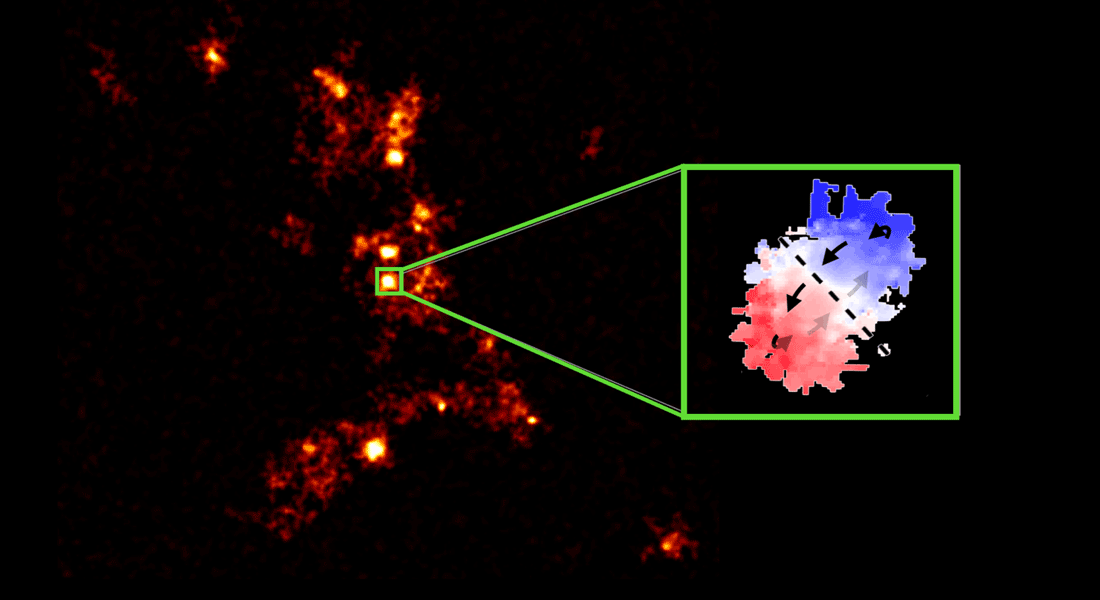Astronomers discover a swarm of galaxies orbiting vigorously star-forming galaxy in the early Universe

A team of international astronomers have discovered a swarm of galaxies orbiting a hyper-luminous and vigorously star-forming galaxy in the early Universe.
Using the European Southern Observatory's Very Large Telescope (VLT) and the radio telescope ALMA in Chile, the team led by Michele Ginolfi at ESO, Garching, focused on an already known galaxy, W0410-0913, one of the brightest, most massive and gas-rich galaxies in the distant Universe, seen 12 billion years back in time.
Galaxies like W0410-0913 are called hot dust-obscured galaxies (also known colloquially as "hot DOGs"). These galaxies host active supermassive black holes at their cores and pour out enormous amounts of light at infrared wavelengths, while their visible light is blocked by dust.
Ginolfi and his team decided to observe W0410-0913 with the "MUSE" instrument at the Very Large Telescope (VLT) in Chile. The Multi-Unit Spectroscopic Explorer or MUSE is an integral field spectrograph that allowed the team to study a region 40 times wider than the galaxy itself. The advanced tool is able to obtain no fewer than 90,000 spectra simultaneously, over a wide field of view.
"The observations revealed that W0410-0913 is surrounded by a swarm of no fewer than 24 smaller galaxies. The cool thing about the MUSE instrument is that we can measure not only their position in the sky, but also their distance along our line of sight. In other words, we can measure their 3D positions," Peter Laursen from the Cosmic Dawn Center in Copenhagen, who also participated in the study.
According to the researchers, while W0410-0913 is seen at a time when the Universe was 1/8 of its current age, it is already ten times as massive as our Milky Way. Growing such a massive galaxy in such a short time, and feeding a monster black hole, does require a substantial supply of fresh material.
"In fact, in such a dense environment, the rate of galaxy interactions and merging is expected to be very high," the researchers said. They anticipated W0410-0913 to be a car wreck of chaotically whirling clumps of gas and stars
Digging into old observations obtained by the ALMA radio antennae located only 300 km north-east of the VLT, Ginolfi and his team found that W0410-0913 seems not to have been disturbed by interactions with companion galaxies at all. According to the observations, its gas rotates nicely and orderly around the central black hole, with speeds reaching 500 km/s.
"Coupling the results from the two very different telescopes, we see a picture of how the most massive and dusty galaxies may evolve. This type of galaxies, a vital stage in the transition from a dusty and star-forming galaxy to a quasar, tends to grow in very dense environments." Ginolfi says.
The study has been published in the journal Nature Communications.










